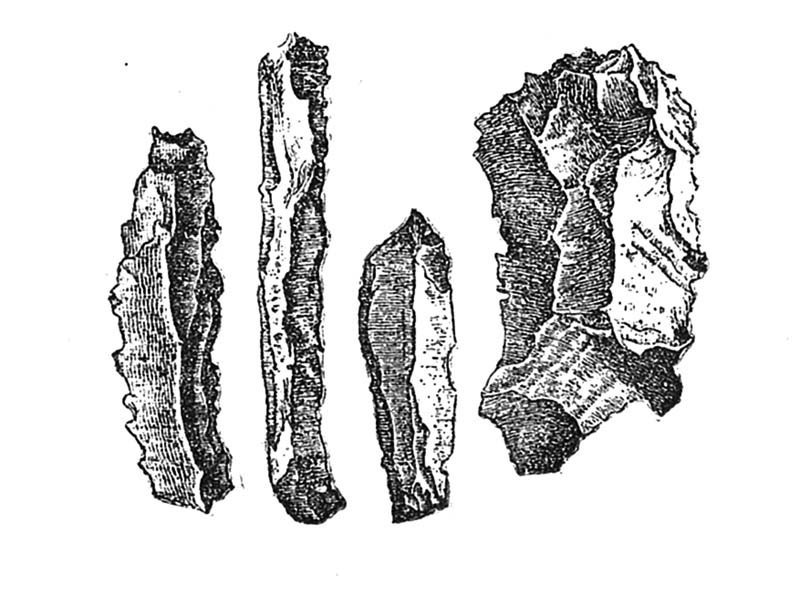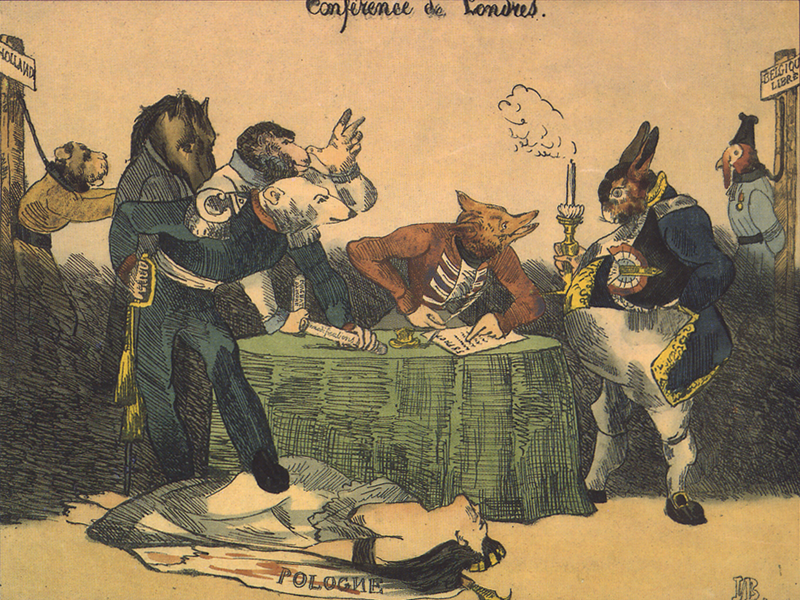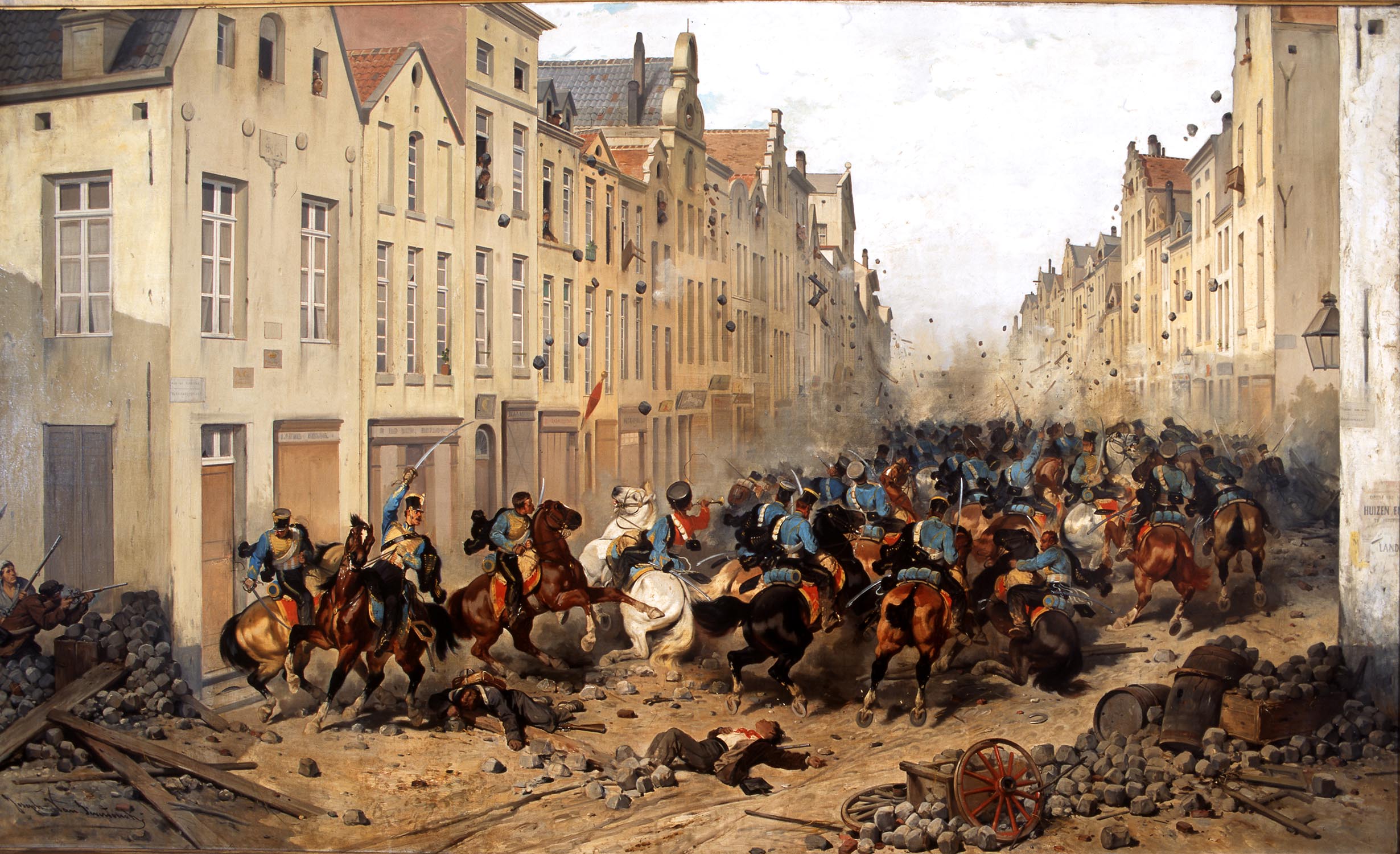|
History Of Belgium
For most of its history, what is today Belgium was either a part of a larger territory, such as the medieval Carolingian Empire, or was divided into a number of smaller states which were prominent among them. The pre Belgian states being, the Duchy of Lower Lorraine, the Duchy of Brabant, the County of Flanders, the Prince-Bishopric of Liège, the County of Namur, the County of Hainaut and the County of Luxembourg. Due to its strategic location as a country in contact between different cultures, Belgium has historically been called the "crossroads of Europe", and for the many armies fighting on its soil, it has also been called the "battlefield of Europe" or the " cockpit of Europe". Today, Belgium's modern shape can be traced back at least as far as the southern core of the medieval Burgundian Netherlands. The Eighty Years' War (1568–1648) later led to the split between a northern Dutch Republic and the Southern Netherlands from which Belgium and Luxembourg developed. The ar ... [...More Info...] [...Related Items...] OR: [Wikipedia] [Google] [Baidu] |
Belgium
Belgium, officially the Kingdom of Belgium, is a country in Northwestern Europe. Situated in a coastal lowland region known as the Low Countries, it is bordered by the Netherlands to the north, Germany to the east, Luxembourg to the southeast, France to the south, and the North Sea to the west. Belgium covers an area of and has a population of more than 11.8 million; its population density of ranks List of countries and dependencies by population density, 22nd in the world and Area and population of European countries, sixth in Europe. The capital and Metropolitan areas in Belgium, largest metropolitan region is City of Brussels, Brussels; other major cities are Antwerp, Ghent, Charleroi, Liège, Bruges, Namur, and Leuven. Belgium is a parliamentary system, parliamentary constitutional monarchy with a complex Federation, federal system structured on regional and linguistic grounds. The country is divided into three highly autonomous Communities, regions and language areas o ... [...More Info...] [...Related Items...] OR: [Wikipedia] [Google] [Baidu] |
Austrian Netherlands
The Austrian Netherlands was the territory of the Burgundian Circle of the Holy Roman Empire between 1714 and 1797. The period began with the acquisition by the Austrian Habsburg monarchy of the former Spanish Netherlands under the Treaty of Rastatt in 1714. It lasted until Revolutionary France annexation, annexed the territory after the Battle of Sprimont in 1794 and the Peace of Basel in 1795. Austria relinquished its claim on the province in 1797 through the Treaty of Campo Formio. The Netherlands, previously the Burgundian Netherlands, inherited by the Spanish branch of the Habsburgs, having revolted against the absolutism and centralism of Philip II of Spain, their common sovereign, launched a war which led in fact, in 1568, to the formation in the north of the Republic of the United Provinces, a new state whose independence would finally be recognized by the King of Spain in 1648 during the Treaty of Münster (October 1648), Treaty of Münster, and in the south of a group o ... [...More Info...] [...Related Items...] OR: [Wikipedia] [Google] [Baidu] |
Leopold III Of Belgium
Leopold III (3 November 1901 – 25 September 1983) was King of the Belgians from 23 February 1934 until his abdication on 16 July 1951. At the outbreak of World War II, Leopold tried to maintain Belgian neutrality, but after the Battle of Belgium, German invasion in May 1940, he surrendered his country, earning him much hostility, both at home and abroad. Leopold's act was declared unconstitutional by Prime Minister Hubert Pierlot and his cabinet, who moved to London to form a Belgian government in exile, government-in-exile, while Leopold and his family were placed under house arrest. In 1944, they were moved to Germany and then Austria, before being liberated by the Americans, but banned for some years from returning to Belgium, where his brother Prince Charles, Count of Flanders, had been declared regent. Leopold's eventual return to his homeland in 1950 nearly caused a civil war, with serious calls for a secessionist republic in Wallonia. Under pressure from the government, ... [...More Info...] [...Related Items...] OR: [Wikipedia] [Google] [Baidu] |
Rape Of Belgium
The Rape of Belgium was a series of systematic war crimes, especially mass murder and German occupation of Belgium during World War I#Deportation and forced labour, deportation, by German troops against Belgians, Belgian civilians during German invasion of Belgium (1914), the invasion and German occupation of Belgium during World War I, occupation of Belgium during World War I. The neutrality of Belgium had been guaranteed by the Treaty of London (1839), Treaty of London of 1839, which had been signed by the German Confederation (of which Kingdom of Prussia, Prussia was a member). However, the German Schlieffen Plan required that German armed forces advance through Belgium (thus violating its neutrality) in order to outflank the French Army, concentrated in eastern France. The German Chancellor, Theobald von Bethmann Hollweg, dismissed the treaty of 1839 as a "scrap of paper". Throughout the war, the German army systematically engaged in numerous atrocities against the civ ... [...More Info...] [...Related Items...] OR: [Wikipedia] [Google] [Baidu] |
Leopold I Of Belgium
Leopold I (16 December 1790 – 10 December 1865) was the first king of the Belgians, reigning from 21 July 1831 until his death in 1865. The youngest son of Francis, Duke of Saxe-Coburg-Saalfeld, Leopold took a commission in the Imperial Russian Army and fought against Napoleon after French troops overran Saxe-Coburg during the Napoleonic Wars. After Napoleon's defeat, Leopold moved to the United Kingdom, where in 1816 he married Princess Charlotte of Wales (1796–1817), Princess Charlotte of Wales, the only child of the British Prince Regent (later George IV). Leopold and Charlotte's marriage was happy, but it ended after a year and a half when Charlotte died after delivering a stillborn son. Leopold continued to enjoy considerable status in Britain. After the Greek War of Independence, Leopold was offered the throne of Greece under the 1830 London Protocol that created an independent Greek state, but turned it down, believing it to be too precarious. Instead, he accepted t ... [...More Info...] [...Related Items...] OR: [Wikipedia] [Google] [Baidu] |
King Of Belgium
The monarchy of Belgium is the constitutional and hereditary institution of the monarchical head of state of the Kingdom of Belgium. As a popular monarchy, the Belgian monarch uses the title king/queen of the Belgians and serves as the country's head of state and commander-in-chief of the Belgian Armed Forces. There have been seven Belgian monarchs since independence in 1830. The incumbent, Philippe, ascended the throne on 21 July 2013, following the abdication of his father Albert II. Origins When Belgium gained independence from the United Kingdom of the Netherlands in 1830, the National Congress chose a constitutional monarchy as the form of government. The Congress voted on the question on 22 November 1830, supporting monarchy by 174 votes to 13. In February 1831, the Congress nominated Louis, Duke of Nemours, the son of the French king Louis-Philippe, but international considerations deterred Louis-Philippe from accepting the honour for his son. Following ... [...More Info...] [...Related Items...] OR: [Wikipedia] [Google] [Baidu] |
London Conference Of 1830
The London Conference of 1830 brought together representatives of the five major European powers Austrian Empire, Austria, United Kingdom of Great Britain and Ireland, Britain, July monarchy, France, Prussia and Russian Empire, Russia. At the conference, which began on 20 December, they recognized the success of the Belgian revolution, Belgian secession from the United Kingdom of the Netherlands and permanently guaranteed History of Belgium#Independence, Belgian independence. Dutch response The History of the Netherlands#Belgium breaks away, Dutch were strongly opposed to Belgian independence, Ten days' campaign, launching an unsuccessful invasion in 1831. Not until 1839 did the Dutch accept the decision of the London Conference and recognize Belgian independence. Winners and losers Fishman says that the London Conference was "an extraordinarily successful conference" because it "provided the institutional framework through which the leading powers of the time safeguarded the p ... [...More Info...] [...Related Items...] OR: [Wikipedia] [Google] [Baidu] |
Belgian Revolution
The Belgian Revolution (, ) was a conflict which led to the secession of the southern provinces (mainly the former Southern Netherlands) from the United Kingdom of the Netherlands and the establishment of an independent Kingdom of Belgium. The people of the south were mainly Flemish people, Flemings and Walloons. Both peoples were traditionally Roman Catholic as contrasted with Protestant-dominated (Dutch Reformed) people of the north. Many outspoken liberals regarded William I of the Netherlands, King William I's rule as despotic. There were high levels of unemployment and industrial unrest among the working classes. On 25 August 1830, riots erupted in Brussels and shops were looted. Theatergoers who had just watched the nationalistic opera ''La muette de Portici'' joined the mob. Uprisings followed elsewhere in the country. Factories were occupied and machinery destroyed. Order was restored briefly after William committed troops to the Southern Provinces but rioting continued ... [...More Info...] [...Related Items...] OR: [Wikipedia] [Google] [Baidu] |
House Of Orange-Nassau
The House of Orange-Nassau (, ), also known as the House of Orange because of the prestige of the princely title of Orange, also referred to as the Fourth House of Orange in comparison with the other noble houses that held the Principality of Orange, is the current dynasty, reigning house of the Netherlands. A branch of the European House of Nassau, the house has played a central role in the Politics and government of the Netherlands (1581–1795), politics and government of the Netherlands and elsewhere in Europe, particularly since William the Silent organised the Dutch Revolt against Spain, Spanish rule, which after the Eighty Years' War (1568–1648) led to an Dutch Republic, independent Dutch state. William III of Orange led the resistance of the Netherlands and Europe to Louis XIV of France and orchestrated the Glorious Revolution in England that established parliamentary rule. Similarly, Queen Wilhelmina of the Netherlands was instrumental in the Dutch resistance during W ... [...More Info...] [...Related Items...] OR: [Wikipedia] [Google] [Baidu] |
Dynastic Union
A dynastic union is a type of union in which different states are governed beneath the same dynasty, with their boundaries, their laws, and their interests remaining distinct from each other. It is a form of association looser than a personal union, when several states share the same monarch, and a real union, when they have common institutions in addition to the same monarch. Historical examples Marriage Iberia Marriage of Count of Barcelona Raymond Berengar IV of Barcelona and future Queen of Aragon Petronila of Aragon in 1137 that formed the Crown of Aragon. Marriage of Isabella I of Castile and Ferdinand II of Aragon in 1469 that laid the foundations for the kingdom of Spain. They did not ascend to their respective thrones until 1474 and 1479 respectively. Lithuania and Poland Marriage of Jogaila and Queen Jadwiga of Poland on 1385, generally called the Union of Krewo. That union laid the foundations for the eventual formation of the Polish–Lithuanian Commonwealth. ... [...More Info...] [...Related Items...] OR: [Wikipedia] [Google] [Baidu] |
Grand Duchy Of Luxembourg
Luxembourg, officially the Grand Duchy of Luxembourg, is a landlocked country in Western Europe. It is bordered by Belgium to the west and north, Germany to the east, and France on the south. Its capital and most populous city, Luxembourg City, is one of Institutional seats of the European Union, the four institutional seats of the European Union and hosts several European Union, EU institutions, notably the Court of Justice of the European Union, the highest judicial authority in the EU. As part of the Low Countries, Luxembourg has Benelux, close historic, political, and cultural ties to Belgium and the Netherlands. Culture of Luxembourg, Luxembourg's culture, people, and Languages of Luxembourg, languages are greatly influenced by France and Germany: Luxembourgish, a Germanic language, is the only recognized national language of the Luxembourgers, Luxembourgish people and of the Grand Duchy of Luxembourg; French is the sole language for legislation; and both languages al ... [...More Info...] [...Related Items...] OR: [Wikipedia] [Google] [Baidu] |






